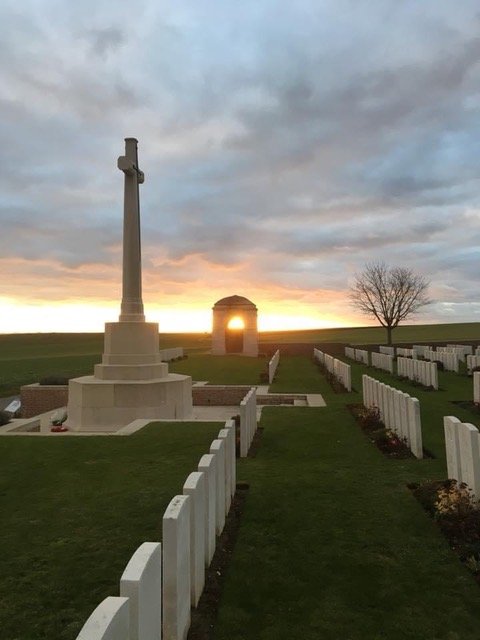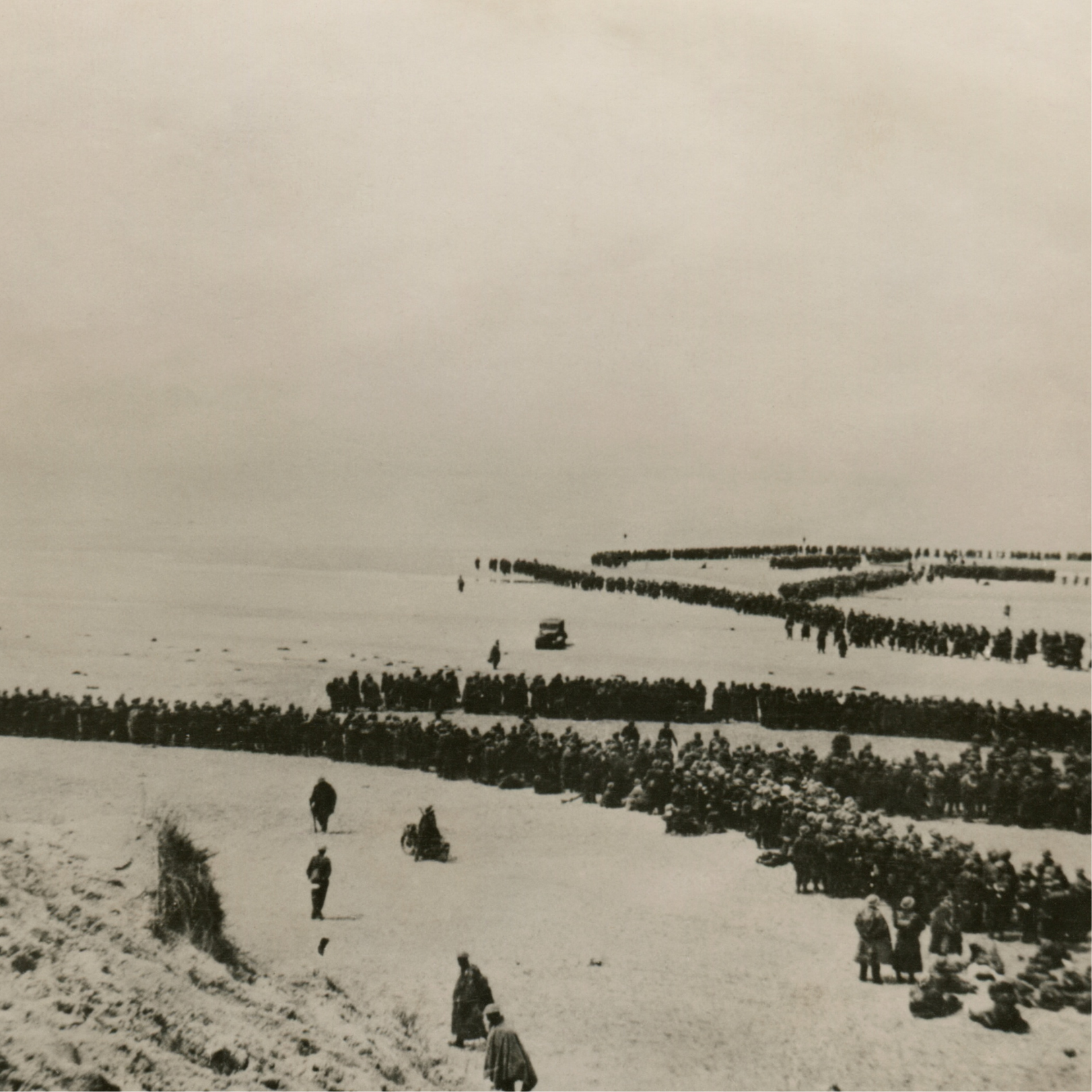Hitler was sent to Belgium after 8 weeks of training where he fought in the first Battle of Ypres. His military service as a runner spanned the entire First World War where he was wounded in 1916 and gassed near Ypres in 1918. He received both the Iron Cross Second Class and the First Class, which was unusual for a lowly Corporal. Hitler left hospital in the midst of the political chaos raging throughout Germany after its defeat and the army sent him as a political agent to Munich to join the small German Workers' Party.
In 1920 he left the army to lead the party's propaganda wing and devoted more time to improving his position within the party which had renamed itself the National-sozialistische Deutsche Arbeiterpartei (Nazi party). Hitler was astute at building his power within the Nazi party and became its leader in 1921 where he set out to build a mass movement surrounded by mysticism which would bind members' loyalty entirely to him.
His early political ambition would culminate in the failed 1923 Munich Putsch where the Nazi Party and its military arm the SA (Sturmabteilung) attempted to seize power in Munich to take advantage of the prevailing political confusion and failings of the Weimar Republic. Hitler, not missing the propaganda opportunity of his trial, was sentenced to 5 years in Landsburg prison for treason, of which he served just 9 months. While in Landsberg, he dictated the first edition of his political autobiography, Mein Kampf or My Struggle in which he outlined his complex and meandering political beliefs; the most prominent and foreboding of which was his implacable belief in the inequality of races, nations and individuals, and the natural order which exalted the "Aryan race". He saw the Jewish race and Marxism as the most significant enemies of Nazism rather than liberal democracy, which was already unstable in Germany by this time.
After his release, Hitler realised that gaining the power he craved would have to be achieved through legal, or semi-legal, means, although while in prison the Weimar republic had regained some much needed stability and Hitler found the German public less receptive to his racist and antagonistic message ... until the 1929 Wall Street crash and Great Depression ushered in a new period of instability across Germany and the world. The Nazi Party subsequently became the second largest party in Germany and by 1932 Hitler was challenging for the chancellorship after securing 36.8% of the vote. President Hindenberg's position was becoming precarious and he made Hitler chancellor on January 30, 1933.
Hitler wasted no time in moving to become absolute dictator by forcing new elections, removing freedoms and intensifying violence against opponents in the wake of the Reichstag fire, which was blamed on a Dutch Communist called Marinus van de Lubbe. On March 23, 1933 the Enabling Bill was passed giving full powers to Hitler and less than 3 months later, all opposition parties, organisations and labour unions ceased to exist. Once dictator of Germany, Hitler set about a campaign of economic recovery, alliance building with fascist Italy and Japan, overturning the harsh terms of the Treaty of Versailles which limited Germany's military capabilities, and expansion to secure living space or lebensraum for the German people.
Hitler launched the Second World War by invading Poland on September 1, 1939 in a joint attack with the Soviet Union. Germany's war strategy was assumed by Hitler from the very beginning to the end of World War Two and by 1942 saw Nazi occupation of much of Western Europe and vast swathes of the Soviet Union.
From 1933 to the early years of catastrophic destruction caused by Hitler's war of aggression and occupation was the Nazi policy of expulsion of European Jews, Roma Gypsies and numerous other people the Nazis considered undesirable. In 1941, "Total War' was declared after America's entry in the war, and the Nazi policy of expulsion changed to the insidious systematic genocide epitomised by the gas chambers of death camps like Auschwitz. From the end of 1942, the tide of war began to turn with German defeats in North Africa and at Stalingrad. In early 1943, Musolini was arrested and Italy sued for peace, necessitating German occupation of Italy taking valuable military resources away from the life and death struggle being fought inch by bloody inch in the East.
With defeats on the battlefield came increased tensions with the military and a string of assassination attempts ensued, the most famous was led by Colonel Claus von Staffenburg in July 1944. By January 1945, with the US led Western allies closing in from the West and the Soviet Red Armies advancing on the shattered shell of Berlin from the East, Hitler, exhausted and increasingly ill due to stress and regular use of amphetamines, abandoned a plan to lead a last ditch resistance from the South, never again left his bunker underneath the chancellery. Before he shot himself, he married Eva Braun and appointed Admiral Karl Donitz Head of State and Joseph Goebbels Chancellor.
Adolf Hitler's reign of terror was not inevitable, nor could he have caused such damage and destruction alone. His ability to take advantage, for his own ends, of the instability in Germany after the First World War was unequalled, as was his ideology of hate which was sadly shared by too many.
Today, there is nothing left of Hitler's bunker and his burned remains were never found. It is possible to stand on the site above the chancellery bunker in Berlin as well as visit the numerous battlefields and significant sites of the Second World War from the beaches of Normandy to the Ardennes forest and the bridge across the Rhine at Arnhem, where the battles were fought and sacrifices made to bring Hitler's reign of tyranny, death and destruction to its end.
Sophie’s Great War tours would be glad to accompany and guide you to help foster a greater understanding of the events and roles individuals played during these dark and dangerous years.



















